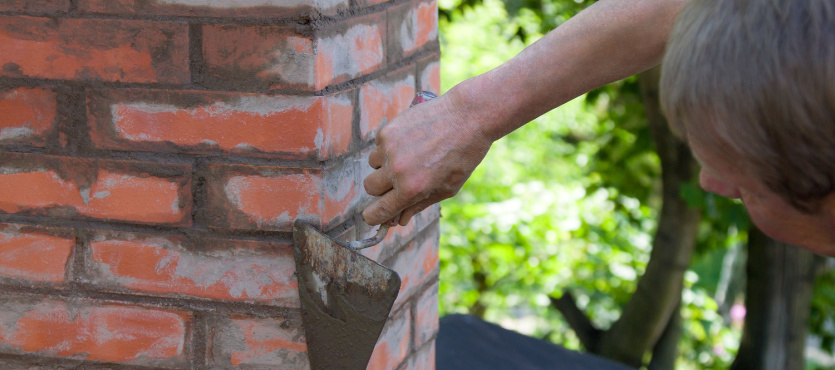Although you might believe that brick masonry needs very little maintenance, the truth is that regular care and attention are still important to ensure the building remains structurally sound and pleasing to the eye for a long time. While brick homes and buildings are known to be able to stand for over a century, they still require maintenance throughout their lifetime, or else you may run into problems at some point. Whether it is a light cleaning to rejuvenate the appearance of a brick wall’s surface or a tuckpointing job to restore the mortar, here are a few things to know about when your brick masonry needs care.
Cleaning
One of the first maintenance routines for brick masonry is a simple cleaning, using a power washer or brush and a water hose to remove any lodged dirt, grime, and stains. You can also remove moss and mildew this way in most circumstances, and it is otherwise one of your first steps for restoring a faded brick’s exterior. You should clean your brick walls any time you see discoloration or fading to restore their appearance.
Tuckpointing
In addition to power wash cleaning, another option in the event of deteriorating or missing mortar is tuckpointing. While the brick blocks themselves may be incredibly durable and long-lasting, the mortar that holds them together tends to break down much sooner, necessitating your attention.
To address any deteriorating mortar that is present, tuckpointing involves removing the old mortar and replacing it with new mortar to restore structural integrity and appearance. While most buildings only need to undergo tuckpointing every 15 to 20 years or so, you should inspect the mortar at least once a year to check for signs of damage and address any identifiable issues before they worsen any further.
Water Damage
Another common cause of damage is moisture due to splashback and rising dampness. Splashback happens when rain continually beats on the bricks, seeping into the cracks and grooves, while rising dampness occurs when groundwater rises and leaves a tide line. To avoid costly repairs and severe damage, you should inspect your brick masonry yearly for signs of water damage and hire maintenance services as necessary.
Other Signs to Watch For
In addition to yearly inspections for water damage and routine cleanings, there are a few signs you should keep an eye out for and address as they present themselves.
1) Deteriorating Mortar – If the mortar is neglected and continues to deteriorate, the bricks may rub against each other and begin to warp, leading to more severe problems. Additionally, applying mortar incorrectly or using the wrong one will complicate matters and cause problems, which is why you should leave it in the hands of a professional and keep an eye on the mortar.
2) Bulging, Bowed, or Cracked Bricks – In addition to inspecting the mortar, you should regularly keep an eye out for signs of bulging, bowing, and cracking in your brick masonry. Neglecting damaged bricks could allow water to seep inside and cause more damage, in addition to weakening the structural integrity of the brick structure until it may no longer be safe. If you notice any unnatural changes or damage to the bricks, you should call for a professional immediately.
3) Interior Damage – Additional signs to watch for are moisture build-up in your walls, drafts, plaster cracks, and deformed windows that could be a result of damaged brick masonry. If you notice any such signs, you should hire a professional as soon as possible for an inspection.
Final Take
If you have noticed signs of wear and tear in your brick masonry, it may be time for professional maintenance to restore its appearance and structural integrity. At Turnbull Masonry, we offer quality services that you can count on to restore your brick masonry, so contact us today to speak with a member of our team.

